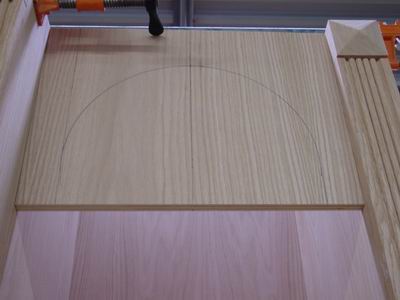Question
I have to install a medicine cabinet into a wall with removing 24'' inches of stud in the middle without damaging sheetrock in the other room. My concern in the sheetrock screws on the other side. What type of tools and procedure should I use?
Forum Responses
(Cabinet and Millwork Installation Forum)
From contributor J:
Cut your hole carefully with a drywall saw and remove that piece. Cut the top and bottom of the stud with a Sawzall. If it is screwed from the other side and not nailed you may have to patch a couple holes but they may pull through clean. Just use a small pry bar and use as little force as necessary to pull the screws through the rock from the backside.
Even with a Multimaster or Sawzall, you must make the client aware that there will most likely need to be touch-up from vibration, as it is unlikely that in a 24" span you will not find a screw or nail to cause a pop. If it doesn't, you're the hero, if it does, they were warned.
Multimaster - use the Multimaster E-cut universal for wood/metal and cut behind the stud between the stud and the sheetrock from the opposite room. This is the easiest way to separate the stud from the sheetrock.
Sawzall - mark where the screw/nail enters the stud from the other room. Cut a semi-circle out to within 1/8" of where the stud meets the sheetrock. From there, gently pry the stud off against the aluminum as the nail/screw is cut, and will no longer have any hold. It is pine, and at 1/8" it should snap fairly easily. Either that, or ask the client if where the location of the nail pop will be is a good place for a picture - it's about the right height.
1. Cut the stud without disturbing the sheetrock on the other side.
2. Screw another two more studs or scraps of wood to the stud horizontally spanning against your sheetrock.
3. Carefully use shingle wedges to evenly pull the cut stud out of the wall. Theoretically the screws will pull thru leaving the compound that covers them. Take your time.
1. Remove drywall bath side.
2. Cut 2x at either end only half depth
3. Chisel out the piece (add additional half depth cuts as needed or desired. Be gentle!).
4. Go back and cut another half depth down and chisel out (gently) the strip of 2x.
5. Repeat until you run out of 2x.
6. Cut drywall screw(s) off with cutoff disk on a dremel tool real gently. (Or clip off with a hardened jaw Starrett music wire end nipper, if you have one.)
7. Add two hours to the cost plus reasonable part of tool costs.
8. Do not offer a guarantee on damage to the wall in the other room. Explain the process and tell them you will be super-careful, and will be charging for extra-careful abnormal work but that you will not absorb money for redoing the custom paint job on the other room wall and that if it is damaged they will have to pay for the redo. As an alternative with a right angle drill you may be able to remove the bulk of the stud with a drill, or hole saw.
